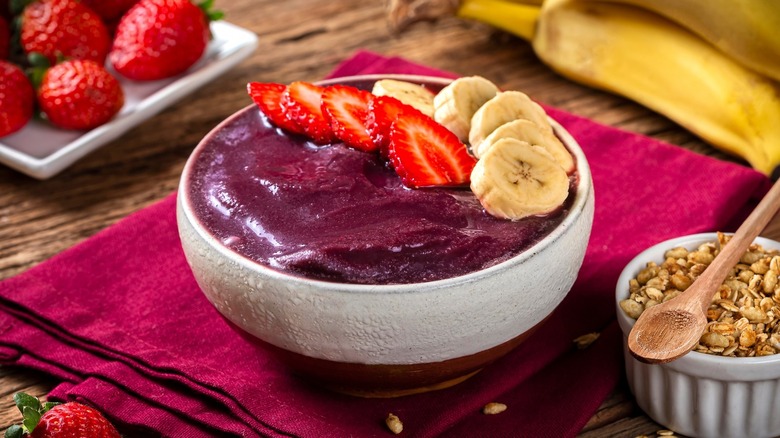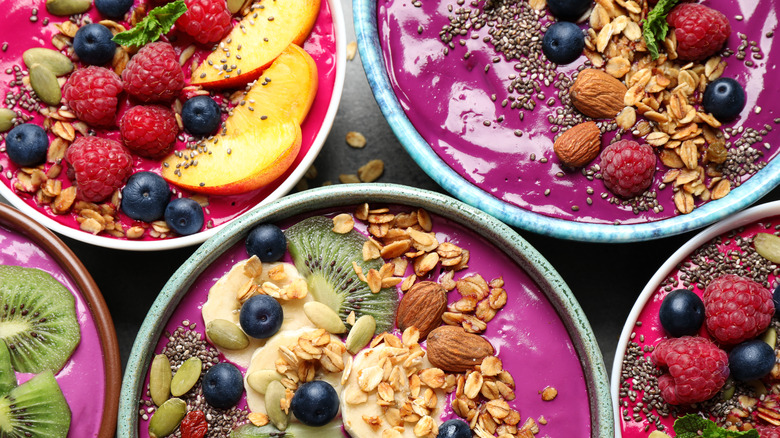How Açaí Bowls Became A Frosty Breakfast Staple
Vibrantly colorful and loaded with fresh fruit toppings, açaí bowls are as trendy as they are delicious. If you're not afraid to mess up the carefully arranged aesthetic of the fruity garnish, digging into one is a tropical paradise all on its own. The frosty purple base is made from pureed açaí berry, a superfood staple in Brazil that grows in the Amazon rainforest.
The berry is packed with antioxidants and, on its own, has a bitter, earthy taste, not sweet. Luckily, some of the best smoothie açaí bowl recipes will call for a juicy blend of other fruits like pineapple and mango to lend their sweet and tangy flavors to the bowl. When you pile on heaps of other chunky fruits, shredded coconut, and flaxseeds, the dish becomes a nutritious, texture-rich breakfast experience.
Indigenous Amazonians consumed açaí for its medicinal, immune-boosting qualities for thousands of years, but this little berry rose to popularity during the 1970s due to migration. The overall concept of the açaí bowl is widely attributed to local martial arts legend Carlos Gracie, one of the founders of Brazilian jiu-jitsu. Gracie decided the nutritional benefits of the low-sugar açaí berry would do wonders for athletic performance, so he made the bowls a big part of the Gracie Diet — and the rest was history.
Two brothers first brought açaí bowls to the United States
After Carlos Gracie's nutritious açaí and banana-infused bowls became a hit throughout Rio de Janeiro, other restaurants in the city began including it on dessert menus with added sugar and granola. It was only a matter of time before people figured out how to import frozen açaí to the United States. In 1999, other athletes recognized how successful the dish could become for health-conscious Americans. Southern California natives Ryan and Jeremy Black took a trip to Brazil and, after noticing how their fellow surfers would inhale an energy-boosting açaí bowl after a long day out on the waves, brainstormed ways to bring them to the U.S. after returning home.
"The idea of selling this super-perishable crop that needed to be shipped frozen sounded difficult," Jeremy told Yahoo! News. Their berry-laced dreams didn't take long to become reality. Once the team made important connections with Amazon farmers and wholesalers, they started selling smoothie mixes from their hometown. Success followed, and eateries all over the U.S. began reaching out to get their hands on açaí for their menus. In 2000, the brothers launched their company, Sambazon, and now are one of the world's top leaders in the açaí industry. Açaí bowls are most popular in California and Hawaii, but there are countless tasty variations of this frozen treat all over the country that are good for both the 'Gram and your gut.

